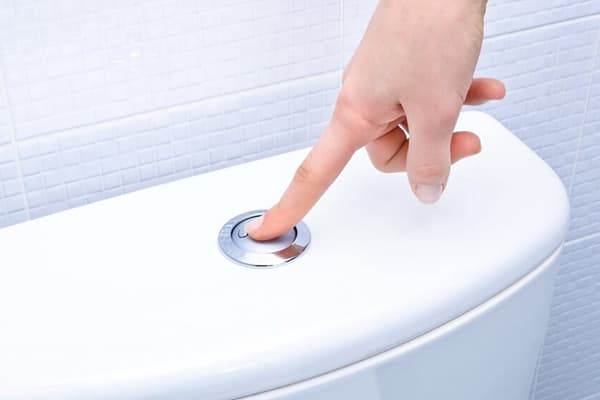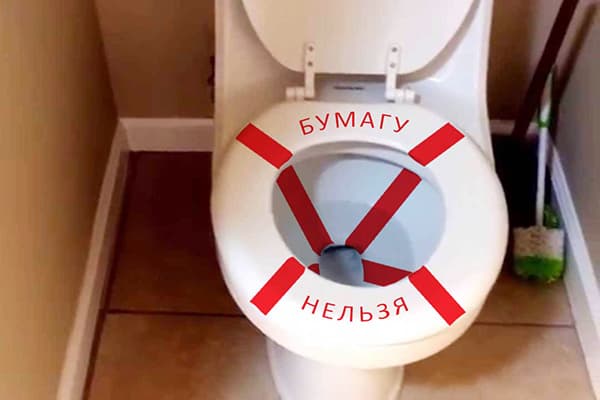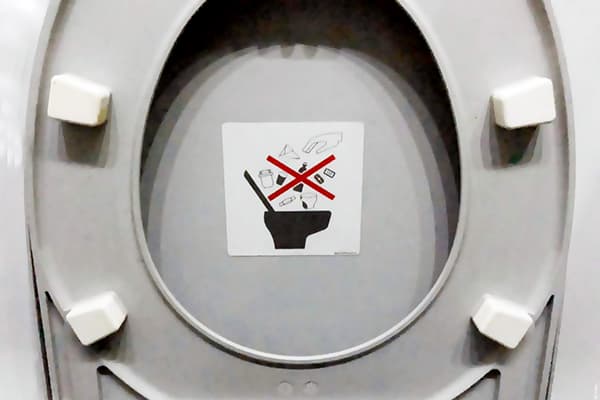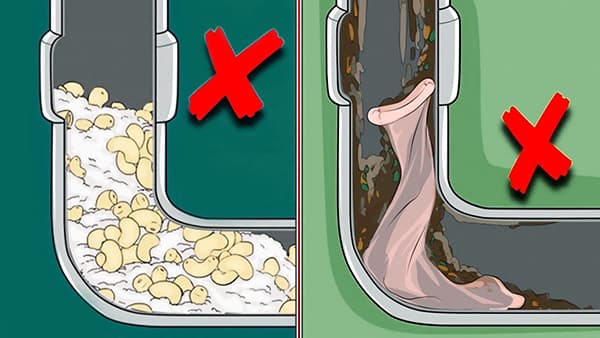It doesn’t come up - it’s so stuck: what can be flushed into the toilet and what can’t be?
Content:
Everyone knows what the toilet is for. But the idea of using it as a garbage chute does not leave the minds of the housewives - they often ask what can be thrown into the toilet. For example, it would be very convenient to wash off condoms, cat litter, napkins, and toilet paper. In fact, using it for its intended purpose is dangerous, and the list of items that you can get rid of in this way is small. Many materials can clog and even rupture pipes. Let's figure out how to handle the toilet correctly and safely.
What can be flushed into the toilet - list
In fact, every person at least once used the toilet as an alternative to the bin. And although it is intended for the disposal of very specific waste, some items can still be washed off. Here is a short list:
- A bug or spider that you caught in the apartment. Getting rid of an uninvited guest in this way, although inhumane, is very quick.
- Dirty water after washing the floor and shoes. Pouring it into the toilet is much safer than pouring it into the sink.
- Dog and cat excrement. If your pet made a “miss”, you can easily throw excrement into the toilet. In fact, dog and cat feces are not very different from human ones. As for worms, they simply do not survive in the sewer environment.
In the toilet you can throw everything that dissolves well in water, as well as small-sized organic waste.
Controversial Items
In fact, the question “what can be flushed into the toilet and what cannot be?” Is still controversial. Especially often discussions are held regarding the following 5 categories of waste:
- Leftover food, missing food. “After all, pouring sour borsch into the bin, after all,” the housewives are outraged at the ban on using the toilet for food disposal. In fact, you can throw borscht into the toilet, the main thing is that it be boneless. Hard bones, like solid foods, can cause blockages. If your residues are solid, thick, chop them with a knife and dilute them with water, and then throw them into the toilet.
- Toilet paper. There is nothing worse than a crowded bucket of used papers. You can permanently get rid of this unpleasant phenomenon if you throw toilet paper directly into the toilet. Nothing will happen if you do not throw it too much and use the flush in a timely manner. It is best to use soft paper that dissolves quickly in water.
- Paper towels and disposable towels. To understand, you can flush them into the toilet or not, conduct an experiment. Fill the bowl with water and throw a couple of napkins into it. After 2-3 hours, stir the water with a spoon. If napkins or towels remain unharmed, you cannot throw them into the toilet. And if you broke up into pieces or dissolved, you can wash off the napkins.
- Cat's toilet. In fact, it is possible to flush the filler into the toilet, but not everyone. Possible disposal methods are indicated by the manufacturer on the packaging. As a rule, clumping (on the basis of clay) and wood filler flush into the toilet is allowed, but in small portions. Do not try to pour a full tray into the toilet!
- Medication. Opponents of flushing out expired, unnecessary pills insist that they contain chemicals that harm the environment. But if you take the same "White", washing powders, detergents for dishes, then they have much more chemistry than a handful of tablets.
The ability to use the toilet to flush the above 5 products directly depends on the type of sewer system. If this is the sewer of an apartment building or local, but with a short straight route and an active septic tank in the tank, then the risk of clogging is minimal. But with local sewage, where pipes have a diameter of less than 10 cm or a length of more than 5 meters, you need to be extremely careful.
Items that cannot be flushed into the toilet for sure
Non-decomposable and large rubbish should not be thrown into the toilet. In addition to the elbow of the toilet, in which it can get stuck, there is a grate in the basement, which runs between the riser and the outlet of the sewer from the house. If a bag, rag, or other similar object is wound around it, all waste will begin to rise upward.
What definitely can not be thrown and poured into the toilet:
- Condoms. Here, as in roulette - for the first time, the product can safely slip into the pipe and leave the apartment, and for the second it will catch on a rough wall and cause blockage.
- Baby diapers and pads. One of the most dangerous items for sewage. Firstly, they do not decompose. Secondly, they greatly increase in size and become across the pipe.
- Tampon. This hygiene item, although smaller in size than the gasket, is no less dangerous in terms of clogging of pipes. In no case should you flush the swab into the toilet. Throw it exclusively in the bin.
- Wet wipes. Unlike dry paper towels, wet towels are made from moisture resistant materials. In the pipe, they easily cling to roughness, turn into a lump, which sooner or later makes itself felt.
- Silica gel filler. It absorbs moisture better than wood, and also perfectly eliminates odors. However, silica gel greatly increases in size and, unlike sawdust, does not decompose and does not rot. Even a small portion flushed into the toilet threatens with severe blockage.
- Construction waste, in particular cement. Fortunately, flushing cement into the toilet rarely comes to anyone's mind. But such cases are known. The result of rash actions is very sad - the toilet is not just clogged, the sewage system of the whole entrance fails.
- Hot liquid. If you pour something hot into the toilet, ceramics will most likely burst.
So, it is best to use the toilet for its intended purpose - and nothing else. Although flushing toilet paper is permitted in an apartment building, the condition of the riser and the plumbing itself must also be taken into account. If repairs have not been carried out for a long time, the holes in them can be much smaller than the original pipe diameter.



